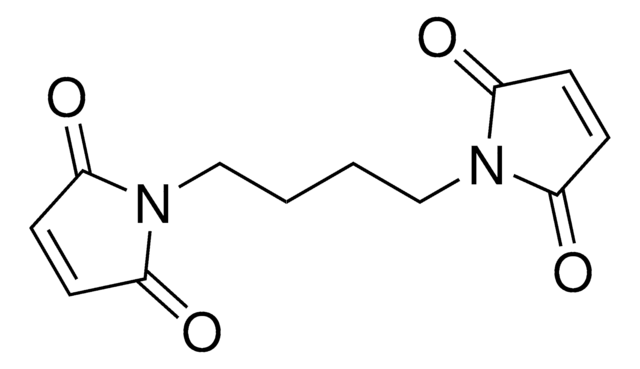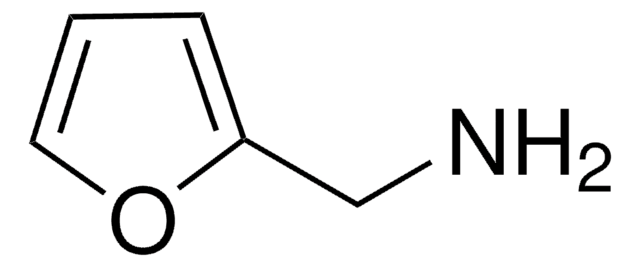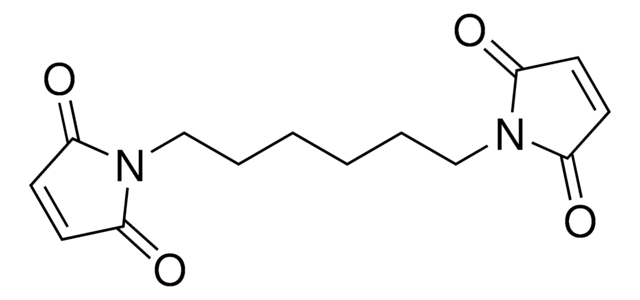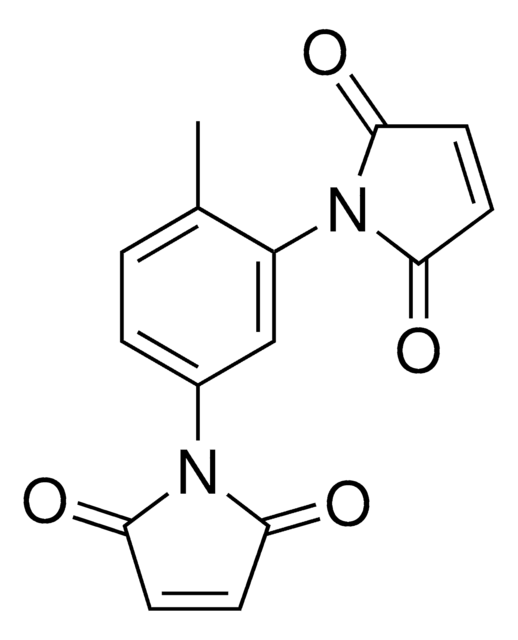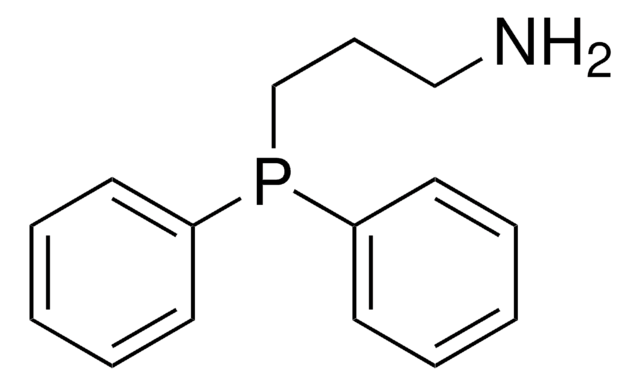803561
BMOE (bis-maleimidoethane)
Synonim(y):
1,1′-ethane-1,2-diylbis(1H-pyrrole-2,5-dione), N,N′-Ethylenebismaleimide, BMOE, Ethylenebismaleimide
About This Item
Polecane produkty
Postać
powder
masa cząsteczkowa
220.18
przydatność reakcji
reagent type: cross-linking reagent
warunki przechowywania
desiccated
rozpuszczalność
DMSO or DMF: soluble
Warunki transportu
ambient
temp. przechowywania
2-8°C
ciąg SMILES
O=C(C=CC1=O)N1CCN2C(C=CC2=O)=O
InChI
1S/C10H8N2O4/c13-7-1-2-8(14)11(7)5-6-12-9(15)3-4-10(12)16/h1-4H,5-6H2
Klucz InChI
PUKLCKVOVCZYKF-UHFFFAOYSA-N
Opis ogólny
Cechy i korzyści
- Reactive groups: maleimide (both ends)
- Reactive towards: sulfhydryl groups
- Short (8.0Å), sulfhydryl-to-sulfhydryl crosslinker, composed of maleimide groups and 7-atom spacer arm
- Shortest bismaleimide crosslinker available for close proximity crosslinking
- Water-insoluble—dissolve first in DMF or DMSO, then add to aqueous reaction buffers
- Noncleavable
Przestroga
Kod klasy składowania
11 - Combustible Solids
Klasa zagrożenia wodnego (WGK)
WGK 3
Temperatura zapłonu (°F)
Not applicable
Temperatura zapłonu (°C)
Not applicable
Certyfikaty analizy (CoA)
Poszukaj Certyfikaty analizy (CoA), wpisując numer partii/serii produktów. Numery serii i partii można znaleźć na etykiecie produktu po słowach „seria” lub „partia”.
Masz już ten produkt?
Dokumenty związane z niedawno zakupionymi produktami zostały zamieszczone w Bibliotece dokumentów.
Nasz zespół naukowców ma doświadczenie we wszystkich obszarach badań, w tym w naukach przyrodniczych, materiałoznawstwie, syntezie chemicznej, chromatografii, analityce i wielu innych dziedzinach.
Skontaktuj się z zespołem ds. pomocy technicznej
